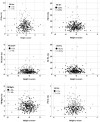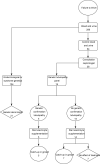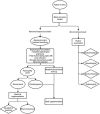Screening for an Underlying Tubulopathy in Children With Growth Failure, Simply Maths?
- PMID: 35911830
- PMCID: PMC9334702
- DOI: 10.3389/fped.2022.902252
Screening for an Underlying Tubulopathy in Children With Growth Failure, Simply Maths?
Abstract
Background: Involving pediatric nephrological input in the clinical diagnostic work-up of children with short stature, gave rise to the hypothesis that the presence of an underlying renal tubular disorder in children with short stature is possibly underestimated. This study focussed on the added value of calculated urinary fractional excretion (FE) in the early detection of tubular disorders in children with growth failure.
Methods: This trial was designed as an observational study analyzing the medical files of children between 5 and 16 years who had been referred for short stature to the pediatric endocrinology outpatient clinic at the University Hospital Antwerp between 25/01/2015 and 01/03/2019. Based on the laboratory results of the simultaneously taken blood and urine sample, the fractional excretions of Sodium, Chloride, Potassium, Calcium, Phosphate, and Magnesium were calculated.
Results: Of the 299 patients, 54 patients had at least one deviating fractional excretion value, requiring further investigation (control sample of blood and urine, kidney ultrasound or 24 h urine collection). Genetic screening for tubulopathies was performed in 19 patients. In 5 patients (1.7% of the total population) a tubulopathy was confirmed based on genetic analysis.
Conclusion: This study explored the possibility of using fractional excretions as a screening test to obtain an earlier diagnosis of tubular disorders in children with short stature. Of the 299 patients, 5 patients were diagnosed with a genetically confirmed tubulopathy. Based on these results, we propose a flowchart for an additional work-up in all children with a deviating fractional excretion.
Keywords: children; genetic screening; short stature; tubulopathy; urinary fractional excretion of electrolytes.
Copyright © 2022 Becue, Ceuleers, den Brinker, Somers, Ledeganck, Dotremont and Trouet.
Conflict of interest statement
The authors declare that the research was conducted in the absence of any commercial or financial relationships that could be construed as a potential conflict of interest.
Figures





References
-
- Broodbank DCM. Renal tubular disorders. Paediatr Child Health. (2014) 24:278–88.
LinkOut - more resources
Full Text Sources

